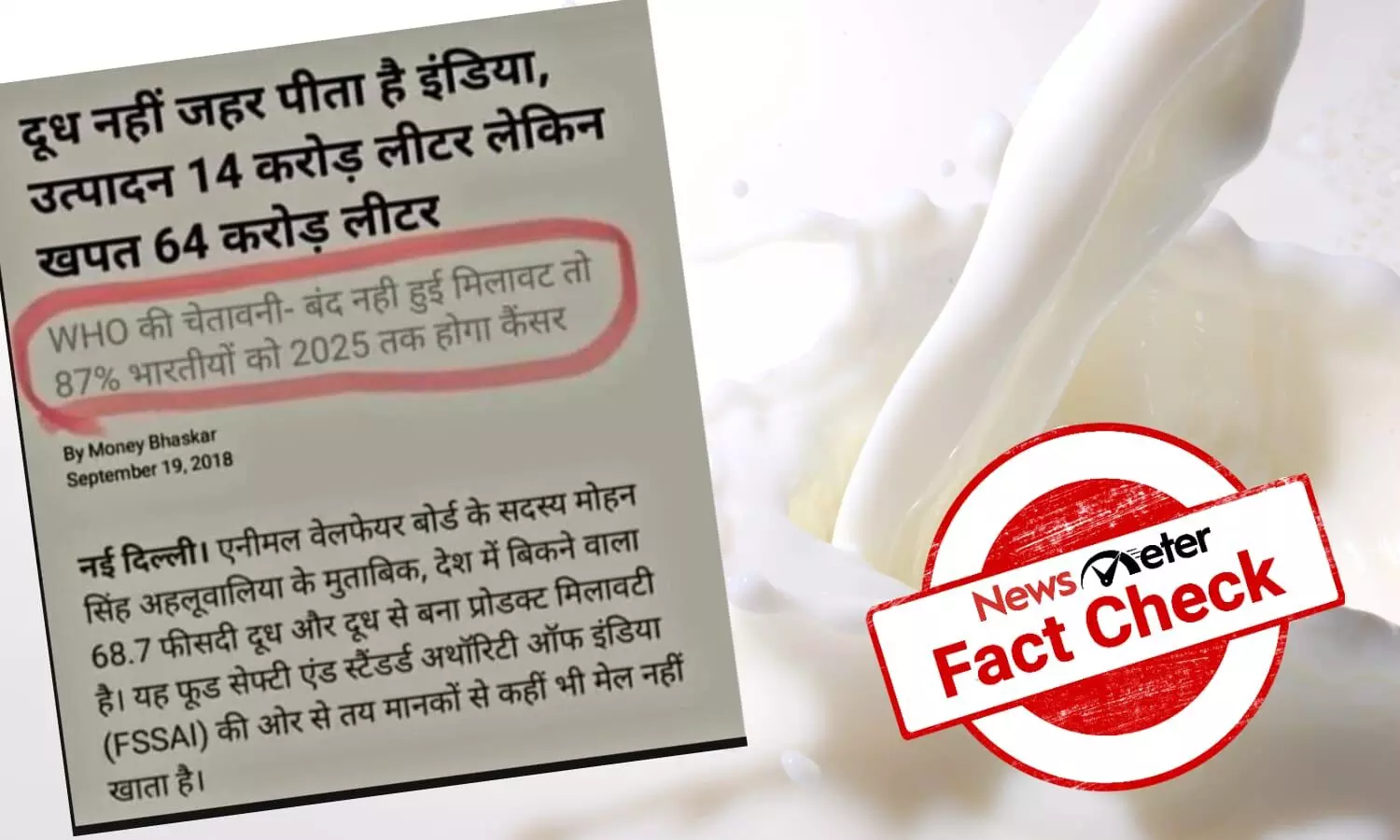Did WHO issue advisory to Indian government on milk adulteration?
A photo of a newspaper clipping is being widely shared on social media.
By Sunanda Naik
Hyderabad: A photo of a newspaper clipping is being widely shared on social media. The clipping includes a report that states the World Health Organisation (WHO) has issued an advisory to the government of India stating that 87% of India’s population will suffer from cancer by 2025 for consuming adulterated milk.
According to the post, WHO said India produces only 14 crore litres of milk every day but consumes 64 crore litres of adulterated milk every day.
The viral post also claims that the Animal Welfare Board has reported that 68.7% of milk or milk products sold in the country are not as per the standards laid down by the Food Safety and Standards Authority of India (FSSAI).
Fact Check
NewsMeter found that the claim is false.
Dr. Harsh Vardhan, the Union minister of health and family welfare, released a press note stating that the World Health Organisation (WHO) did not release any such advisory.
He wrote, “No such advisory has been issued by World Health Organisation (WHO) to the Government of India and the same has been confirmed from WHO country office in India by Food Safety and Standards Authority of India (FSSAI).”
Responding to the second claim, Dr. Harsh Vardhan said, “No. The Nationwide Milk Safety and Quality Survey conducted by Food Safety and Standards Authority of India (FSSAI) in 2018 revealed that only 7%(456 out of total 6,432 samples) had contaminants (antibiotics, pesticides and aflatoxin M1) that make milk unsafe for consumption. Further, only 12 out of a total of 6,432 samples had adulterants that affect the safety of milk. These 12 samples include 6 samples adulterated with hydrogen peroxide, 3 samples adulterated with detergents, 2 samples adulterated with urea and one sample was found to have neutralizers.”
Moreover, PIB has refuted the claims.
क्या विश्व स्वास्थ्य संगठन ने एडवाइजरी जारी कर कहा है कि भारत में उपलब्ध दूध में मिलवाट के कारण 8 सालों में 87% भारतीयों को कैंसर हो जाएगा❓#PIBFactCheck▪️ नहीं ‼️▪️ यह दावा फ़र्ज़ी है।▪️ @WHO ने ऐसी कोई एडवाइजरी जारी नहीं की है। 🔗https://t.co/F1LYhcWQEn pic.twitter.com/1zXkgpHboH
— PIB Fact Check (@PIBFactCheck) October 18, 2022